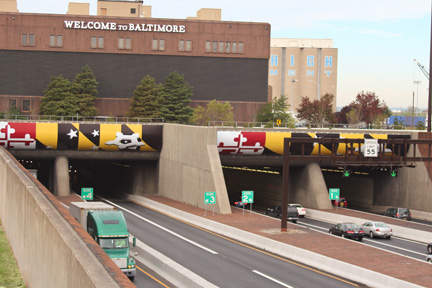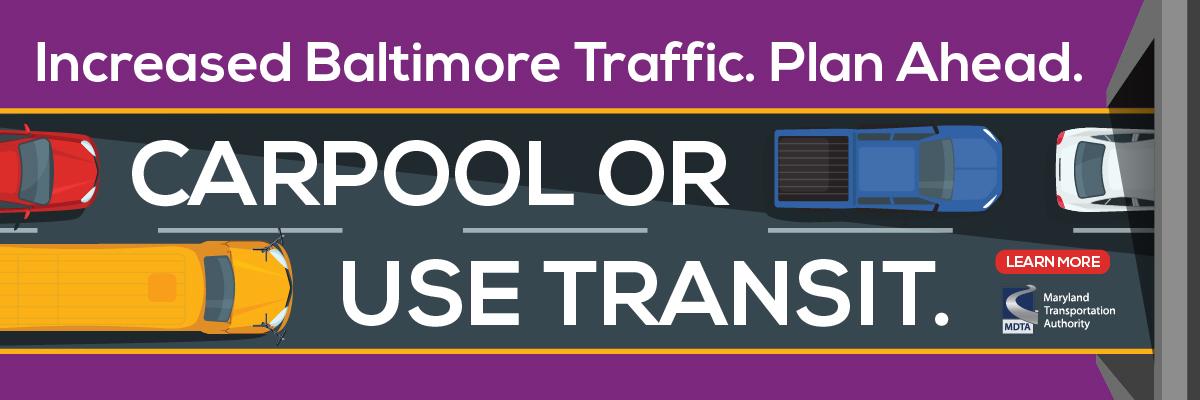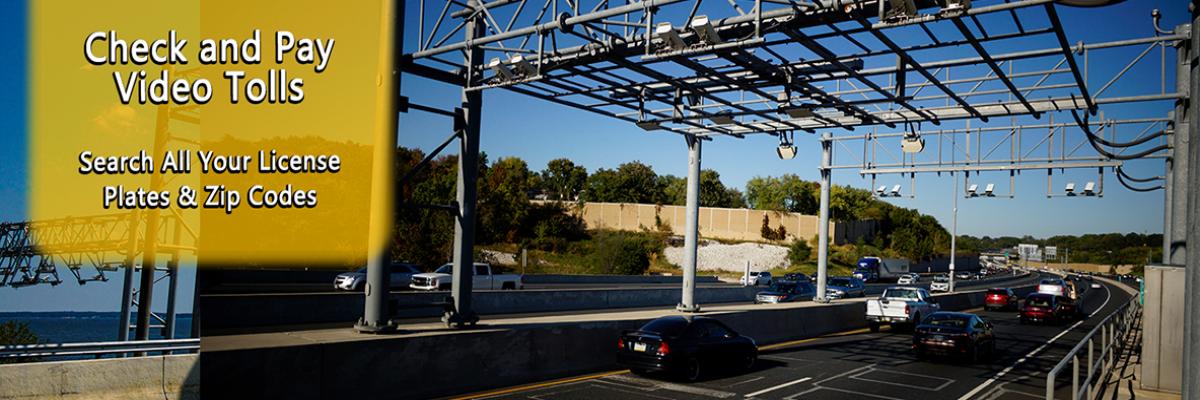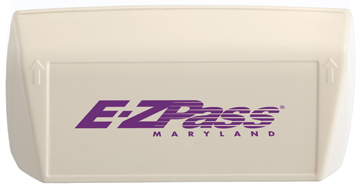
Fort McHenry Tunnel (I-95)
 When it opened to traffic in November 1985, the Fort McHenry Tunnel was the largest underwater highway tunnel, as well as the widest vehicular tunnel built by the immersed tube method in the world. The eight-lane tunnel is nearly 1.4-miles long and connects the Locust Point and Canton areas of Baltimore, crossing under the Patapsco River, just south of historic Fort McHenry. The tunnel is a vital link in I-95, the East Coast's most important interstate route. Including the tunnel and approach roadways, the facility is approximately 10.3 miles in length.
When it opened to traffic in November 1985, the Fort McHenry Tunnel was the largest underwater highway tunnel, as well as the widest vehicular tunnel built by the immersed tube method in the world. The eight-lane tunnel is nearly 1.4-miles long and connects the Locust Point and Canton areas of Baltimore, crossing under the Patapsco River, just south of historic Fort McHenry. The tunnel is a vital link in I-95, the East Coast's most important interstate route. Including the tunnel and approach roadways, the facility is approximately 10.3 miles in length.
The E-ZPass® electronic-toll-collection system is available at the Baltimore Harbor Tunnel.
Propane, Hazardous Materials & Oversized Vehicle Info:
Vehicles carrying bottled propane gas in excess of 10 pounds per container (maximum of 10 containers), bulk gasoline, explosives, significant amounts of radioactive materials, and other hazardous materials are prohibited from using both the Fort McHenry and Baltimore Harbor Tunnels. In addition, vehicles in excess of 13 feet, 6 inches, in height, or 96 inches (8 feet) in width; and all double trailers are prohibited from using the Baltimore Harbor Tunnel. For additional information regarding these restrictions, please call 410-537-1374.
Facility Contact Information:
- Maryland Transportation Authority
Fort McHenry Tunnel Administration Building
3990 Leland Avenue
Baltimore MD 21224 - Long Distance: 1-888-754-0185
- TTY: 410-355-7024
- E-mail: [email protected]
Fort McHenry Tunnel Quick Facts:
- Construction Dates: June 1980 - November 1985
- Cost: $750 million
- Location: Interstate 95 from the southern Baltimore City limit (Caton Avenue) to the northern Baltimore City limit, including the eight-lane tunnel and I-395 into downtown Baltimore
- Crosses under the Patapsco River
- Traffic Volume: 45.4 million vehicles (both directions)
Other Information:
Fort McHenry Tunnel History:
The [Facility Name] is eligible for inclusion in the National Register of Historic Places. For more information about its history, follow link to learn more.








